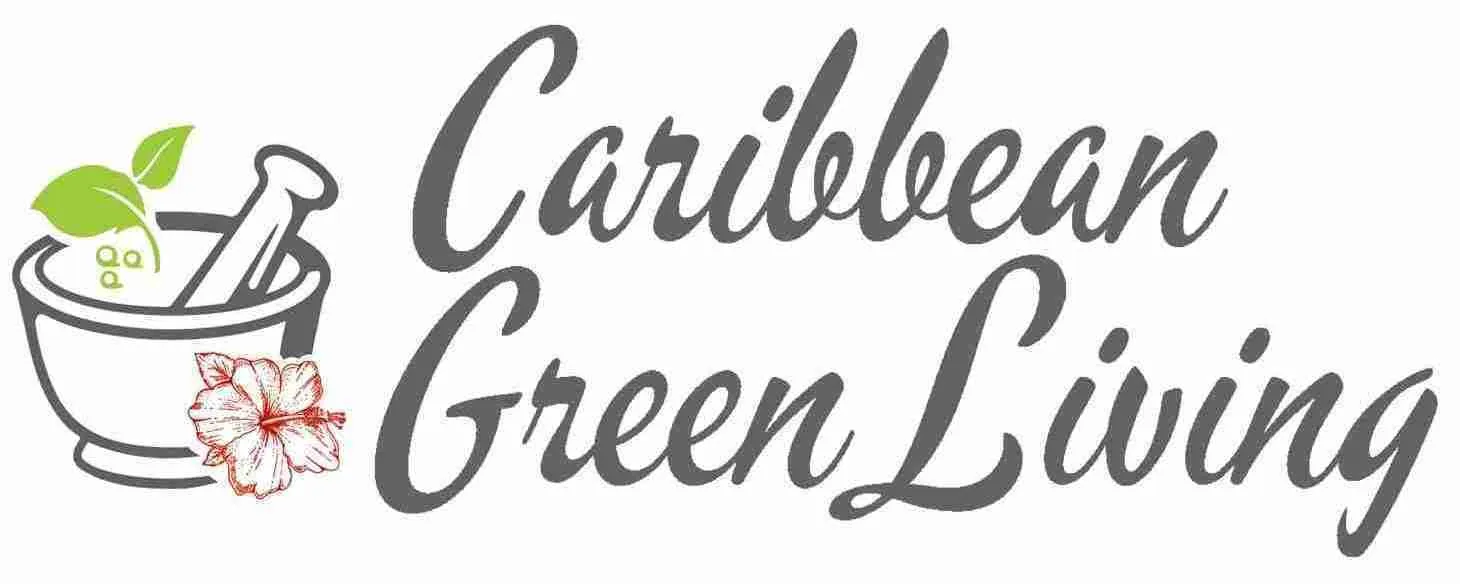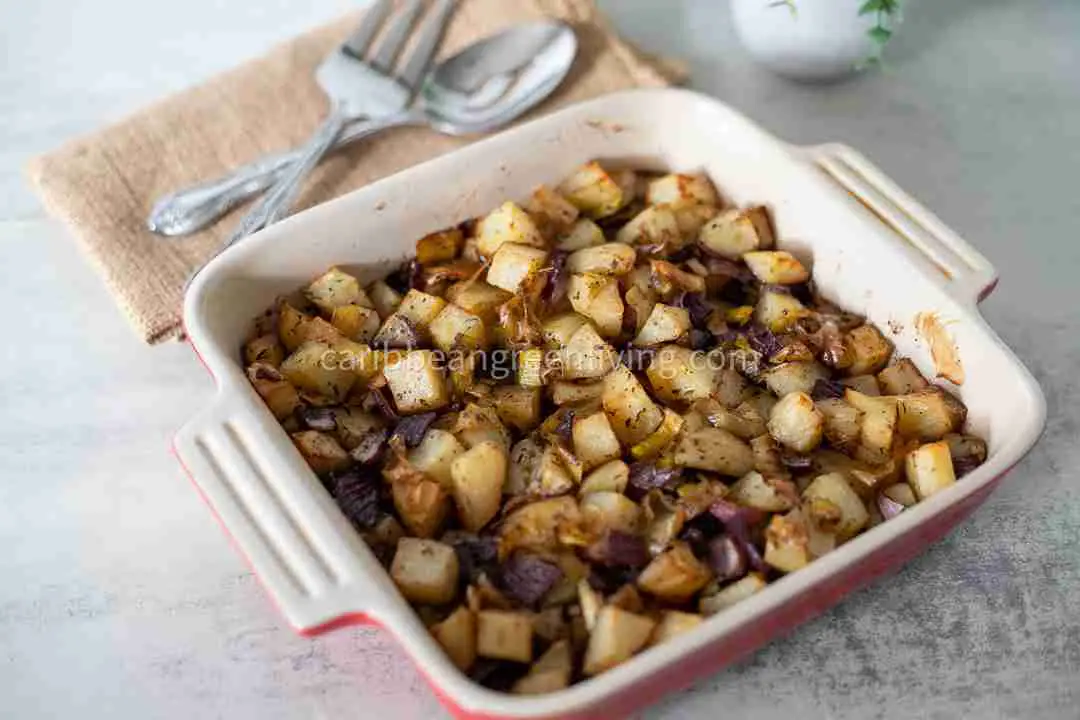The Taste of Home: Sautéing Caribbean Vegetables & Herbs Like a Pro (No Burnt Aromatics Allowed!)
The rhythmic sizzle of ingredients hitting hot oil is the sound of good food. In the Caribbean kitchen, that sound usually means we’re building the aromatic base for something irresistible. Sautéing—from the French word sauter, “to jump”—is that quick, high-heat technique that locks in flavor and preserves the bright textures of island produce, from blettes (Swiss chard) to christophine (chayote). But as simple as it looks, this method demands attention and intention.
When I was younger, my mother used to sauté her fresh herbs before adding them to her Sos Pwa (Haitian bean puree), and the results were out-of-this-world delicious. But the process? A little risky. Every now and then, she’d walk away for “just a second,” and those herbs would burn, releasing a sharp scent that drifted through our two-story home like an aromatic alarm system. It would snake up the hallway and hang in the air until we left for work!
We teased her endlessly—she’d threaten to stop cooking so we could starve, bien sûr—but we always knew she was bluffing. She kept cooking, and we kept showing up with our plates. And honestly, that memory is the perfect reminder: sautéing is a high-reward technique, but it doesn’t play around. Give it your full attention, and you’ll get depth, aroma, and pure Caribbean flavor—without the smoke signals. Now let’s jump into the pro tips that make all the difference.
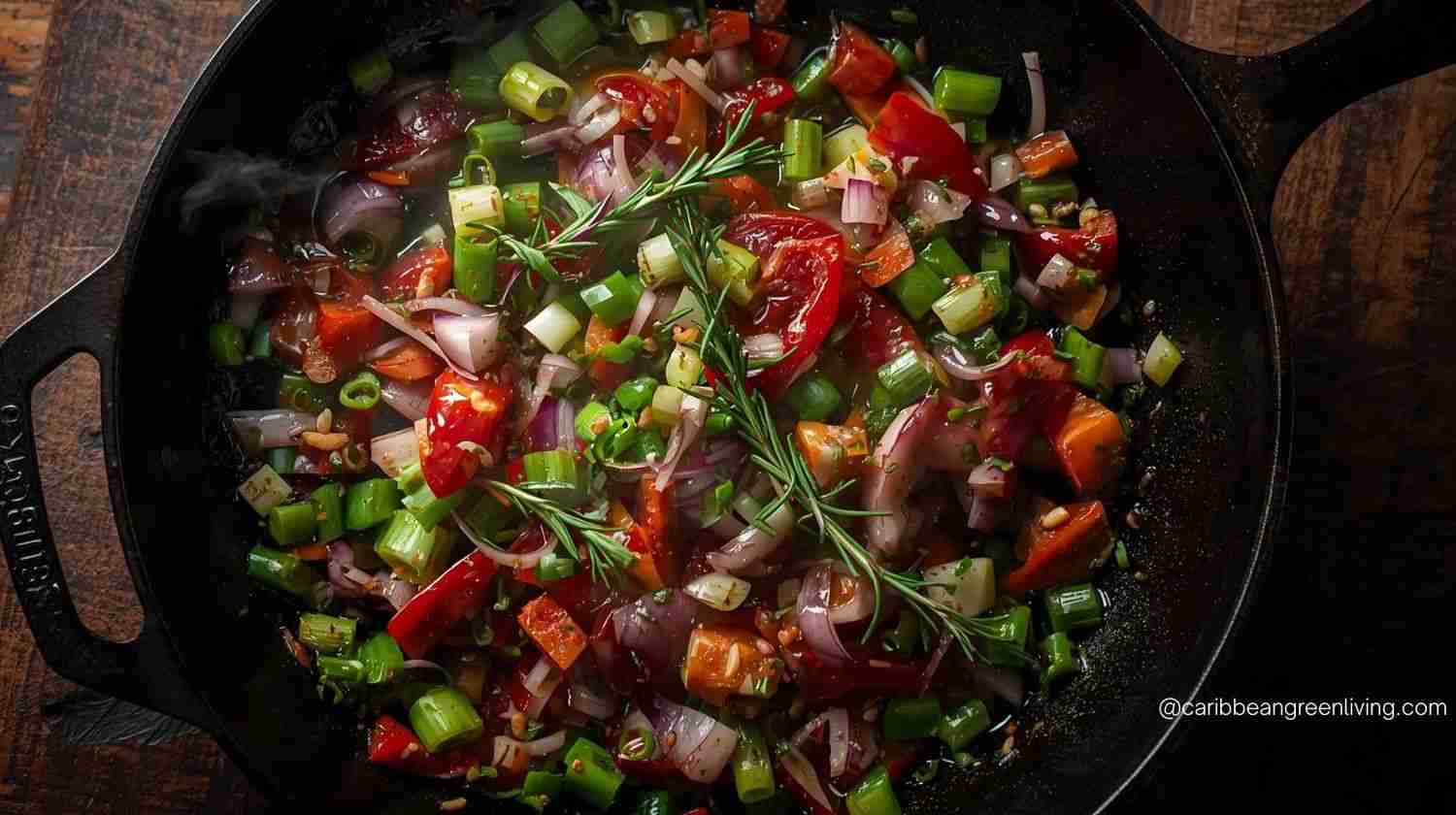
I. The Gear: Choosing the Best Pan for Caribbean Vegetables
For a successful sauté, the surface area and material of your pan are critical for even heat distribution and that beautiful browning (caramelization).
- The Shape: Always choose a pan that is wide and flat-bottomed with low, slightly sloped sides. This shape maximizes the surface area for your vegetables to make contact with the heat and allows steam to escape rapidly (which prevents steaming).
- The Material:
- Stainless Steel: The professional’s choice. It heats quickly, retains heat well, and creates the best fond (the browned bits of flavor) at the bottom for deglazing.
- Cast Iron: Excellent heat retention, and gives a fantastic, deep sear. Just ensure it’s fully preheated.
- Avoid Heavy-Sided Pots: Deeper pots or woks are best for stir-frying or stewing, but a flat sauté pan is best for this specific technique.
II. The Fuel: Selecting the Right Oil
The secret to a hot, clean sauté is using a fat with a high smoke point.
| Oil Type | Smoke Point | Notes & Caribbean Flavor Profile |
| Avocado Oil | Very High (over 500°F) | Neutral flavor. The best for high-heat cooking. |
| Canola/Vegetable Oil | High (over 400°F) | Neutral and affordable. A reliable workhorse for sautéing. |
| Refined Coconut Oil | Adds a rich, nutty depth, though it is less common in traditional Caribbean cuisine. | Perfect for adding a subtle, authentic Caribbean flavor. |
| Ghee (Clarified Butter) | High (485°F) | Low to Medium (325°F) |
| Olive Oil (EVOO) | Low to Medium (325F) | Low to Medium (325°F) |
III. The Professional’s Prep: Setting the Stage
Sautéing happens fast, so your preparation (mise en place) must be perfect.
- Uniformity is Key: Chop all vegetables into roughly the same size and thickness. This is crucial for even cooking. For example, bell peppers and onions should be sliced similarly.
- Dry Them Off: Excess moisture is the enemy of a good sauté! Water prevents vegetables from browning and caramelizing (the “Maillard reaction“). Wash and then pat your vegetables completely dry with a clean kitchen towel or paper towels.
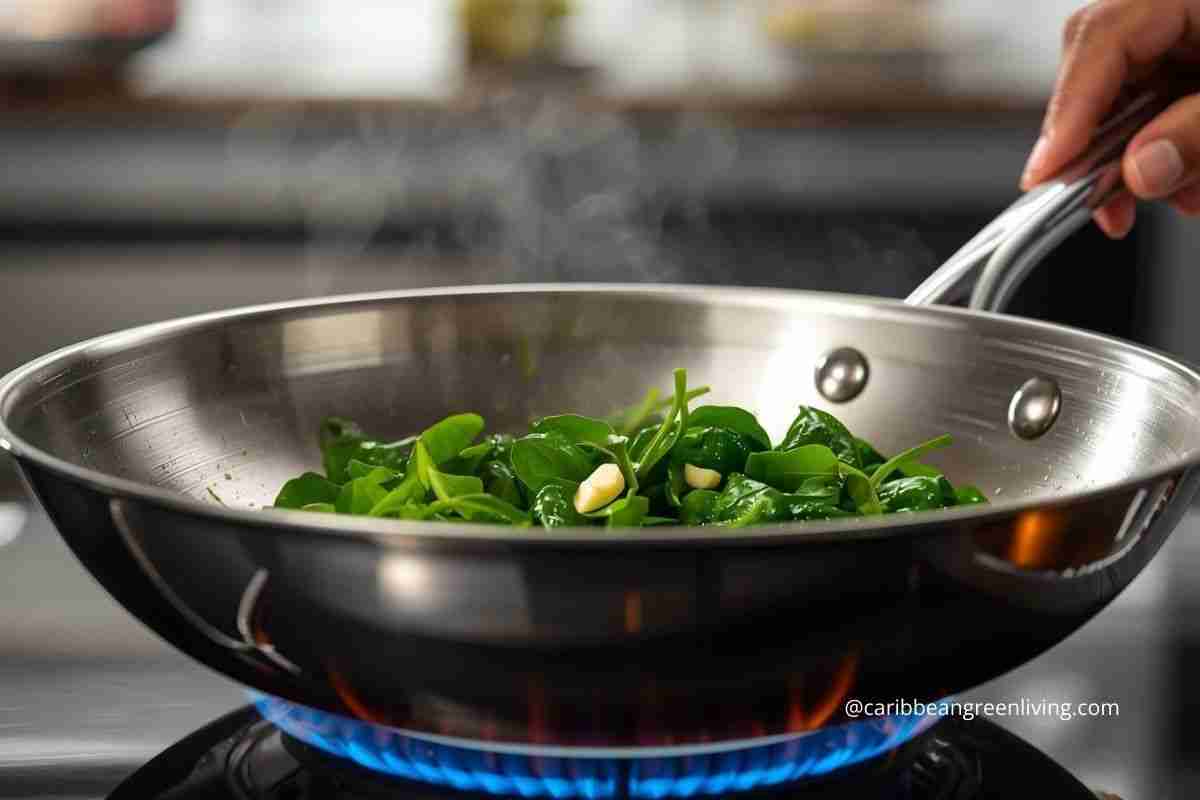
IV. Mastering the Heat: The Goldilocks Principle
The success of your sauté hinges on the right temperature.
- Heat the Pan First: Place your skillet over medium-high to high heat.
- Add the Oil: Once the pan is hot (after about 30-60 seconds), add your high-smoke-point oil. Wait for the oil to start shimmering—this is the signal it’s ready. If it starts smoking heavily, your pan is too hot.
- The Cardinal Rule: Do Not Overcrowd! If you put too many vegetables in the pan, the temperature drops, moisture is released, and your veggies will steam into a soggy mess.
- The Solution: Cook in small batches. The vegetables should form a mostly single layer on the pan’s surface.
V. The Layered Sauté: Timing is Everything (A Caribbean Guide)
Not all vegetables cook at the same rate. A pro staggers their ingredients to achieve a perfect finish, where everything is crisp-tender.
| Category | Caribbean Examples | When to Add |
| Hard/Long-Cooking | Carrots, Christophine (Chayote), Igname (Yam), Sweet Potato (small cubes), Dachine (Taro). | First (cook for 2-3 minutes before the next batch). |
| Medium-Cooking Aromatics | Onions, Bell Peppers, Piment Cabri (Scotch Bonnet) (whole or sliced), Ginger. | Second (cook for another 2-3 minutes). |
| Quick-Cooking | Zucchini/Squash, Okra, Mushrooms, Blettes (Swiss chard/leafy greens’ stem). | Third (cook for 2 minutes). |
| Leafy Greens | Callaloo (Amaranth/Taro leaves), Spinach, Cabbage. | Last (only need 1-2 minutes to wilt). |
VI. The Herb and Seasoning Strategy: Maximize Flavor, Minimize Burn
Flavor is added in stages to maximize impact without burning delicate ingredients—especially fresh herbs!
- Dried Spices: Add your dry seasoning mix (Jerk, Curry Powder, All-Purpose Seasoning) in the middle of the cooking process—after the first batch of vegetables is slightly softened. A quick 30-second toss allows the spices to “bloom” in the hot oil, releasing their full aroma.
- Garlic and Ginger: These can burn quickly! Add minced garlic or grated ginger in the last 30-60 seconds of sautéing. This ensures you get their potent flavor without a bitter, burnt taste, preventing the “burnt odor” dilemma.
- The Fresh Herb Rule: “Finish with Fresh” (or Saute with Scrutiny):
- Tough Herbs (like sprigs of Thyme or Rosemary): These can be added with the onions and peppers to infuse the oil, but must be watched closely and removed if they begin to darken rapidly.
- Tender Herbs (like Scallions, Parsley, Cilantro/Shado Beni): As my mother learned, it is safer (and still delicious) to add these right at the very end, often after you turn off the heat. The residual warmth is enough to release their oil and brighten the dish without them blackening. This is the surest way to avoid that pervasive, unwanted hallway aroma!
- Salt: Wait to salt! Salt draws out moisture from vegetables, which, as we know, leads to steaming. Add salt just before you remove the vegetables from the pan, or even after they are plated.
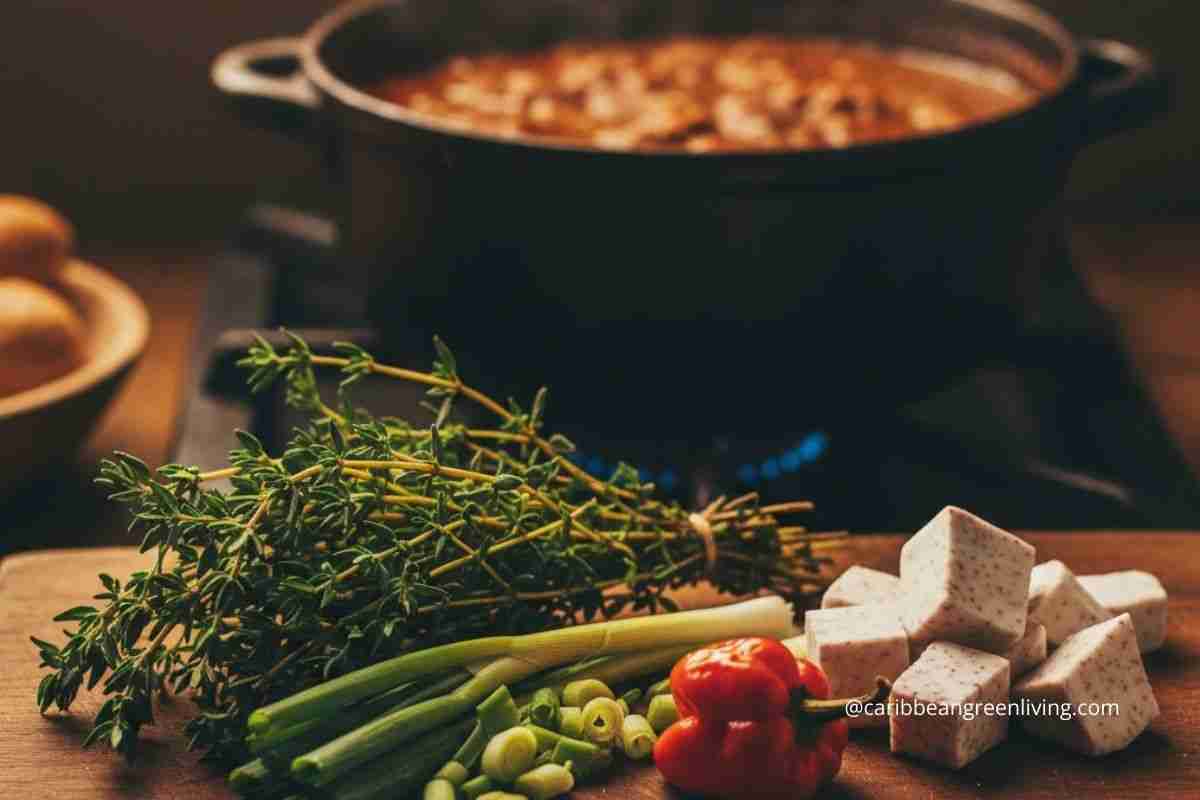
VII. Pro Tip: Deglazing for Depth of Flavor
If you notice browned bits (called fond) sticking to the bottom of your pan, that’s a good thing—it’s concentrated flavor! To incorporate it:
- Pour off any excess oil.
- Add a small splash of liquid (water, vegetable broth, or a tablespoon of lime juice) to the hot pan.
- Scrape up the fond with a wooden spoon.
- Toss the vegetables in the flavorful liquid until it evaporates, creating a rich glaze.
So there you have it: the key to achieving that perfect crisp-tender texture and deeply infused Caribbean flavor lies in preparation, heat control, and careful timing. Whether you’re quickly sautéing some blettes with garlic or building the aromatic base for your next stew, remember to choose the right tools and keep a watchful eye on your ingredients.
While I miss my mother’s playful threats in the kitchen, I cherish the delicious lessons she taught me—including how important it is not to let the scallions burn! Now, go forth, embrace the sizzle, and bring the vibrant taste and aroma of professional-level sautéing to your kitchen. Bon appétit!
Sources:
